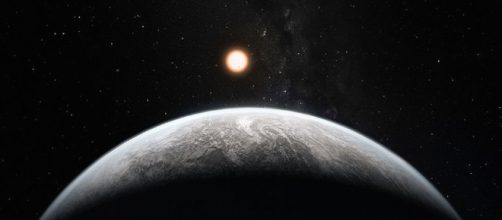Wednesday’s announcement by #NASA has given us proof of what our eyes see in the skies on a starry filled night. The many stars that make up the constellations are not simple points of light for the unimaginative, or stars for the scientific, but places where there are other planets.
Trappist 1
The announcement by NASA scientists that they have discovered seven approximately Earth sized planets around the sun they called TRAPPIST-1 has thrilled people around the world. The discovery is made even more important by the fact that three of these planets are within the zone of the system considered most likely to form life.
The discovery was made through the Spitzer space telescope which is part of NASA’s space telescope programme which began in 1990 with the Hubble telescope. Spitzer, which was known as the Space Infrared Telescope Facility, has been in space since 2003.
Astronomers
As we have seen over these years, the space telescopes have allowed the Belgian led team of astronomers to have unprecedented views of the universe unobstructed by clouds, smog, or other atmospheric conditions.
Over a period of 21 days the astronomers were able to concentrate on the star known as Trappist-1 and the observations they made led to the discovery of the planets.
In giving details of planets, their size and the period of their rotation around the star the scientists explained that it was still too early to state the presence of life, or whether or not water is present on any of the planets which would indicate the possibility of life.
Implications
The announcement of the discovery also gives us an idea of the implications of finding seven planets around a star which is a relatively close 38 light years from our own Sun and has raised the probability that life is much more likely than was previously thought.
In addition, the number of Earth size planets and the fact that three of them fit within the definition of the conditions for life also give hope that the discovery of life in other star systems is no longer a remote possibility.
As reported by many newspapers, NASA Associate Administrator, Science Mission Director stated during the press conference presenting the results of the astronomers’ work that “This discovery gives us a hint that finding a second earth is not a matter of if but when,”
Reality
The news would once have been part of a science fiction film or story, but is now a part of our daily lives and a reality that over the long term will be a part of life on Earth.
With the exception of conspiracy theorists who believe that such contacts already exist nobody expects that aliens will land on our planet this afternoon, or that we will contact another civilization over the next few days, but the discovery will give a boost to another long term international project.
SETI, the search for extraterrestrial intelligence, has often been a derided project by many around the world. The fact that China began operating a new Five-hundred-meter Aperture Spherical Telescope (FAST) radio telescope in its Guizhou province is a concrete sign that the project is held in serious consideration in the scientific community and yesterday’s announcement put it into the new context of interplanetary reality revealed by NASA’s discovery.
Without doubt there are those who will criticize the money spent on this and other research projects such as the International Space Station, but the funds are few in comparison with the military spending of virtually every country. The medical research undertaken in space and the experiments in physics and other sciences are all passed on to our daily lives and are of benefit to us all.
NASA’s announcement yesterday shows us that the money is not wasted and that the field of science fiction is more real than some of us may have imagined.
We may not be closer to real space exploration than we were yesterday morning, but we now know that there will be worlds to discover, beginning with our near neighbours.

